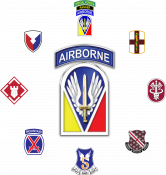
By Defense and Veterans Brain Injury Center
WASHINGTON — Every year, the Defense Department recognizes March as Brain Injury Awareness month to increase awareness of traumatic brain injury.
To underscore the department-wide effort to understand, prevent, diagnose and treat TBI, Deputy Secretary of Defense Patrick Shanahan released a memo dated Oct. 1, 2018, that outlines a strategy and action plan to support warfighter brain health.
“Our pursuit of superior lethality must be matched by a commitment to understanding, preventing, diagnosing and treating TBI in all its forms,” Shanahan stated in his memo.
Through the Defense and Veterans Brain Injury Center, a division of the Defense Health Agency Research and Development Directorate and the TBI center of excellence for the Defense Department, the department is leveraging new technologies and cutting-edge research to develop concussion care tools and protocols that prioritize early identification and individualized treatment to maximize warfighter brain health.
2019 theme: Advancing Warfighter Brain Health
The 2019 Brain Injury Awareness Month theme supports the enduring responsibility of DoD to promote and protect the health and well-being of the nation’s warfighters and their families.
“Only by amplifying our communications about, and promoting awareness of warfighter brain health and surveillance initiatives, can the department eliminate, once and for all, the stigma that remains attached to help-seeking behaviors,” Shanahan stated.
About traumatic brain injury
TBI is a signature injury of current conflicts and, according to DVBIC, 383,947 service members received a TBI diagnosis from 2000 until the first quarter of 2018. Additional facts include:
• DVBIC defines a TBI as the result of a blow or jolt to the head that disrupts the normal function of the brain; not all blows or jolts to the head result in a TBI.
• Injuries can be closed or penetrating head wounds and will range in severity from mild to moderate to severe.
• The most common form of TBI in the military is mild TBI, also referred to as concussion.
• Common symptoms following a concussion include headaches, dizziness, sleep disturbances, vision changes, balance problems, fatigue, attention and memory problems, irritability and mood changes.
• Early detection of traumatic brain injury leads to early treatment; early treatment leads to better outcomes.
“Educating our service members and families to recognize the signs and symptoms indicative of TBI and making it easy for families, loved ones and friends to seek and receive the information and support they need to respond compassionately and constructively to a member who may have sustained a TBI, are essential first steps,” wrote Shanahan.
TBI research, tools for providers
The MHS will leverage the month-long focus on TBI to highlight ongoing research and breakthroughs that help improve and maintain the quality of life for those living with a brain injury.
DVBIC will also promote the recent release of new cutting-edge provider tools, such as the updated Military Acute Concussion Evaluation, or MACE 2. The MACE 2 is a screening tool that allows frontline providers to quickly screen for concussion. The MACE 2 tool can be downloaded at https://health.mil/Reference-Center/Forms/2015/04/30/MACE-2012.




